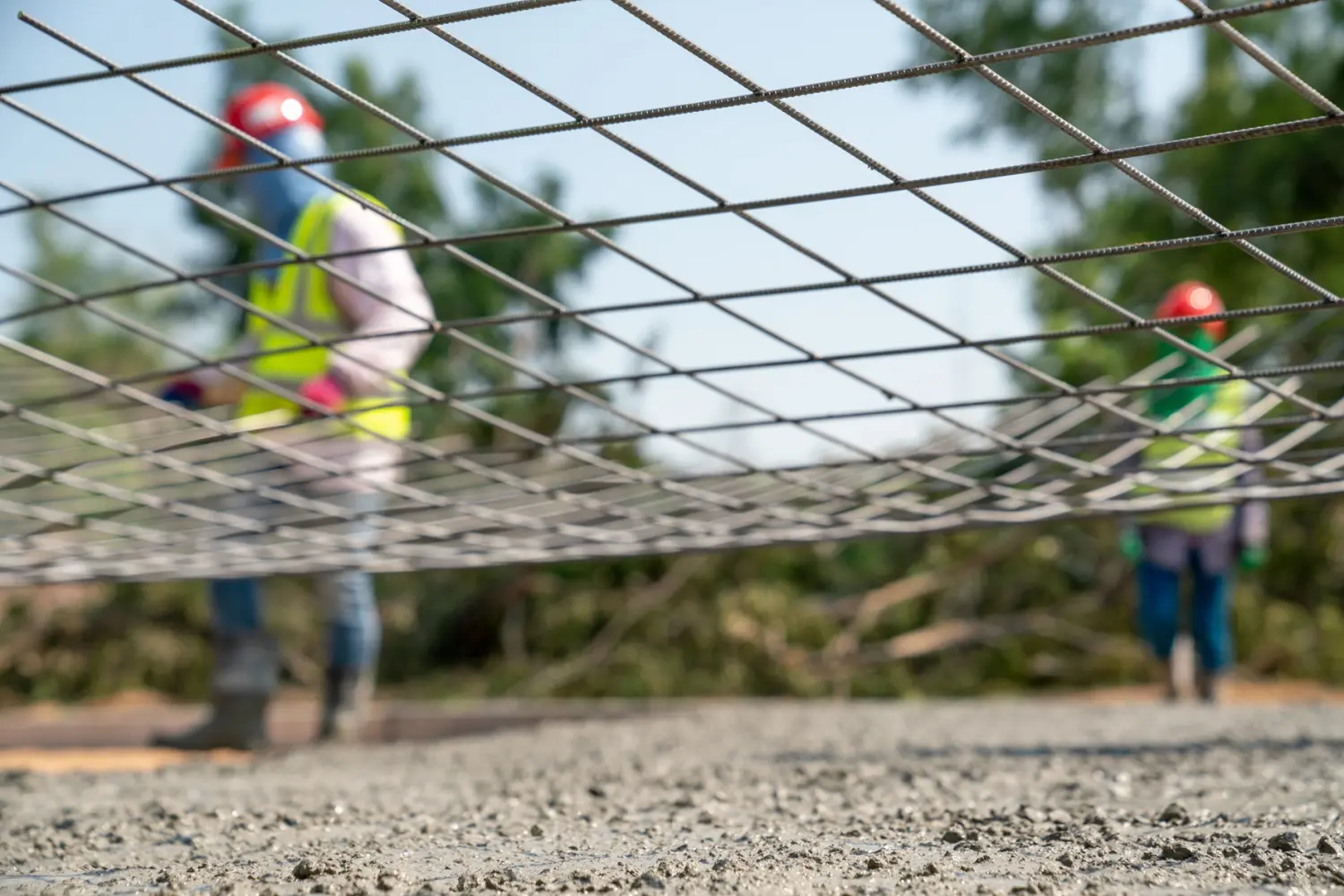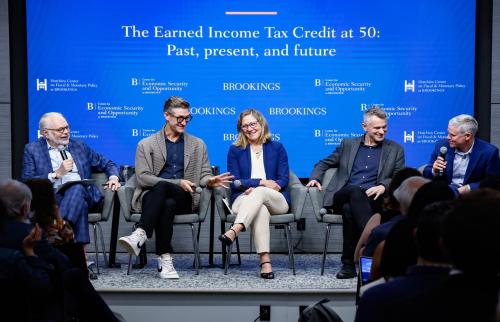This analysis directs attention toward a population notably ill-served by the safety net: low-income working-age adults without dependents or government-determined disabilities (able-bodied adults without dependents or ABAWDs).
Most of the nation’s traditional social welfare policy programs, such as food, cash, and housing assistance, explicitly target or otherwise prioritize delivery to children, adults with custody or direct responsibility for children under age 18, elderly adults, and those with disabilities. As a result, in 2017, social insurance programs reduced poverty for children (44 percent), elderly adults (69 percent), and adults with disabilities (60 percent). The safety net reduces poverty among ABAWDs by about 8 percent.
The authors show that ABAWDs are demographically diverse, are members of families, and struggle with health issues. The authors argue that a safety net that is largely inaccessible to ABAWDs, many of whom face employment obstacles, does not recognize the state of the low-wage labor market and the precarious position of many of its workers.
The safety net does little to support low-income ABAWDs
The authors show that approximately 14.4 percent of adults between the ages of 18 and 64 who do not reside with children and do not receive Social Security (SS) or Supplemental Security Income (SSI) were in poverty in 2017. This rate decreases to 13.3 percent after accounting for taxes and transfers—a mere 1.1 percentage point difference. In contrast, those with SS/SSI saw the largest percentage point reduction in poverty in 2017 (37.8 percentage points), even more than elderly adults overall (34.5 percentage points).
The safety net for working-age adults has been broken for a long time even as the safety net has strengthened for others. From 1993 to 2017, the total reduction in poverty for all groups increased from 6.9 to 11.9 percentage points. For ABAWDs, the safety net went from reducing poverty by 0.8 percentage points in 1993 to 1.1 percentage points in 2017—effectively no change in poverty reduction in the past 25 years.
Those who do not have access to the safety net do not see its benefits. Some states have not extended access to Medicaid to adults 19-64 with incomes below 138 percent of the federal poverty level (FPL). ABAWDs can only receive the Supplemental Nutrition Assistance Program (SNAP) for three months out of 36 if they fail to meet a work requirement. ABAWDs are eligible for many housing assistance programs, but these programs are not entitlements and other groups receive priority. The value of the Earned Income Tax Credit (EITC) for this population is very small. State-level General Assistance (GA) for ABAWDs is either non-existent or paltry.
Who are ABAWDs?
There are a few prevailing stereotypical images of a low-income ABAWD—most famously of an unemployed single white man living with his parents who spends his days playing video games. The authors provide evidence that the ABAWD stereotype does not hold. Nearly half of low-income ABAWDs are women. Low-income ABAWDs are disproportionately people of color. The “able-bodied” moniker masks health issues, while the “without dependents” designation misses some parents and some people who care for elderly adults or individuals with disabilities.
Slightly more than a third of the total population could be characterized as ABAWDs—those between the ages of 18 and 64 who do not have a resident minor child and who do not receive SS/SSI. Overall, 8.2 percent of the population are ABAWDs with incomes below 200 percent FPL, a fifth of all ABAWDs. The authors suggest that there is more churn into and out of being an ABAWD than is commonly understood; for example, ABAWDs could typically work but be temporarily disabled without a job.
Low-income ABAWDs struggle with their health. Nearly 32 percent of ABAWDs living under 200 percent FPL report having a disability, and 24 percent report that a disability affects their ability to work. A striking 46 percent of low-income ABAWDs who never entered the labor force in 2021 self-reported a disability, and 83 percent of that group claimed their disability affected their attempts to work. Among ABAWDs who were employed all 12 months of 2021, 27 percent report a disability, and 39 percent of that group report that their disability impacts their work (e.g., by affecting the number of work hours or type of labor).
Low-income ABAWDs are parents and part of families. About 39 percent of low-income ABAWDs are parents. While most ABAWDs who are parents have adult children, approximately 5 percent of low-income ABAWDs are noncustodial parents (i.e., parents to a child under age 21 who does not live in their household). ABAWDs are not an island onto themselves; they may draw upon family members for financial support, or instead find themselves in the position of providing support for family members in need of assistance, including their children. Policies that exclude ABAWDs can inadvertently place more economic pressure on members of their familial and social network. Intervening with a more robust safety net for ABAWDs who are non-custodial parents can disrupt the intergenerational transmission of economic disadvantage.
How do low-income ABAWDs interact with the labor force?
In the American context, the image of the individual pulling themselves up by their bootstraps without a helping hand explains another aspect of safety-net deservingness: the view that those able to work should be able to adequately support themselves. The authors provide evidence that a safety net that predicates its inaccessibility to ABAWDs on the grounds of self-sufficiency through work does not recognize the state of the low-wage labor market and the precarious position of many of its workers.
The authors show that about half of low-income ABAWDs were employed in March 2023 and 6 percent were seeking work. ABAWDs report that they do not work because they are students, are disabled, are retired, or other reasons, most likely caregiving or home responsibilities. Among unemployed ABAWDs in 2021, only 1.7 percent report no desire to work, compared to 59 percent who report work-related barriers to employment, such as being laid off or not being able to find work.
Benefit inequality as well as income and earnings volatility due to entry and exit into employment, variation in hours worked, and work-schedule instability impede ABAWDs’ ability to support themselves and their families predictably and sustainably. Spells of economic insecurity among ABAWDs are met with an inadequate response from an income support system ill-positioned to help them during times of need. Extending greater safety net protections to ABAWDs can help these adults adapt and respond to volatile economic conditions.
Strengthening the safety net for low-income ABAWDs
Means-testing is not the sole determinant of access to government safety net programs. Eligibility is determined by several factors, and such program rules have excluded ABAWDs from participating in or materially benefiting from the safety net.
The authors argue that the American safety net fails to protect millions of Americans who are in poor health, are part of a complex family, or work in the low-wage labor market who either cannot access or struggle to gain and maintain access to protections. Stereotypical assumptions about ABAWDs, an outdated understanding of the volatile labor market, and changing family norms and demographics render policies and laws regarding ABAWDs unresponsive to the needs of many individuals, families, and their communities.
The authors offer many policy proposals to support this population. Given evidence on the employment effects of the EITC and labor-market-driven income instability among this population, expanding access to and the generosity of the EITC for this population merits consideration. The authors argue that new flexibility around what could constitute sufficient work effort and making searching for work an allowable activity are examples of policies that would allow SNAP to serve as a better work support for those in the low-wage labor market. The authors also call for continued expansion of Medicaid but not with the imposition of Medicaid work requirements.
Opening the aperture for those who merit the protection of social insurance and increasing investment in the nation’s low-income ABAWDs would plug a hole in the nation’s safety net that currently leaves many working-age adults exposed to economic insecurity.
-
Acknowledgements and disclosures
The Brookings Institution is financed through the support of a diverse array of foundations, corporations, governments, individuals, as well as an endowment. A list of donors can be found in our annual reports published online here. The findings, interpretations, and conclusions in this report are solely those of its author(s) and are not influenced by any donation.
The Brookings Institution is committed to quality, independence, and impact.
We are supported by a diverse array of funders. In line with our values and policies, each Brookings publication represents the sole views of its author(s).








